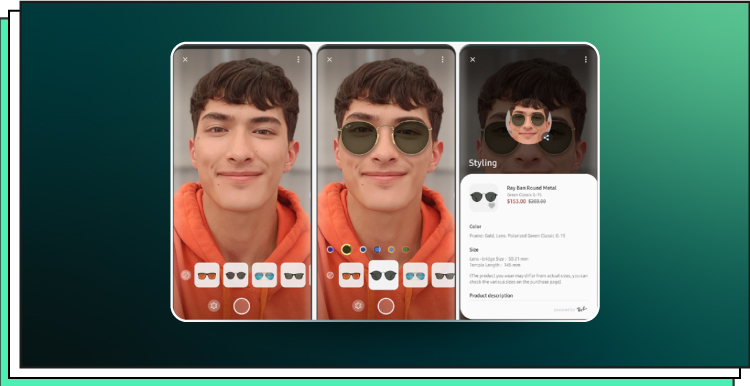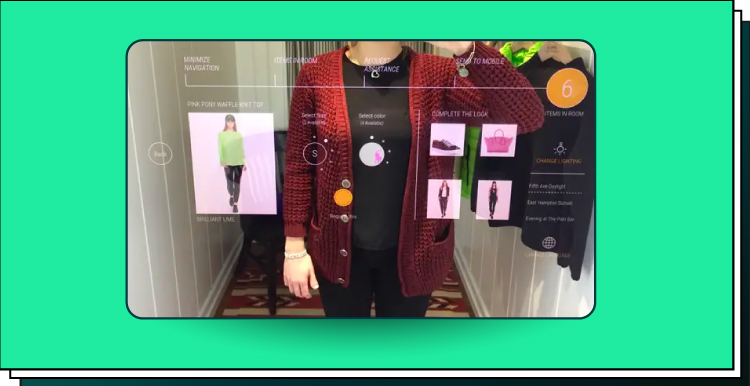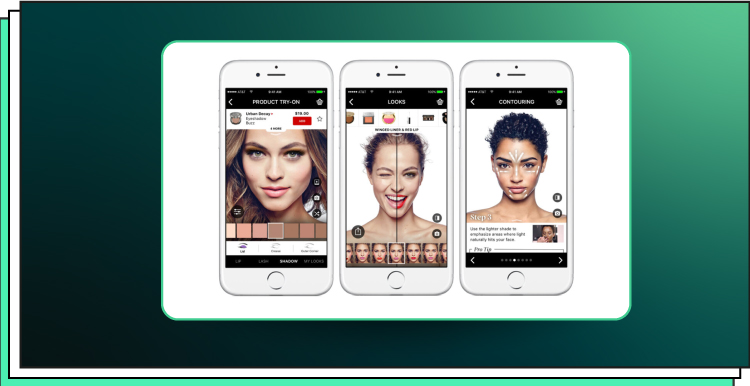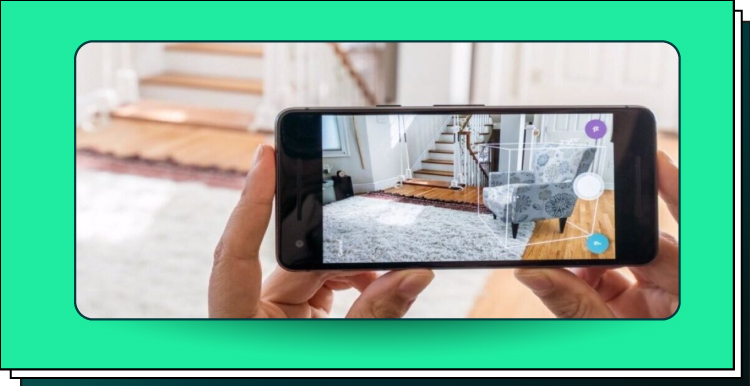Shopping has come a long way since the traditional brick-and-mortar stores of yesterday. With technology continuously advancing, shoppers have access to new and revolutionary ways of finding products they love — nowhere is this more evident than with augmented reality (AR).
AR utilizes virtual representations overlaid in the real world while still being interactive. This groundbreaking technology has transformed the shopping process into an immersive experience, making it easier than ever for customers to find what they need quickly and conveniently.
In this blog post, we’ll explore how AR is revolutionizing the retail sector and why more businesses should be taking advantage of this exciting innovation.
Introduction to Augmented Reality in Retail
According to Allied Market Research, the global AR market in retail was estimated at $2 billion in 2021. It is anticipated to increase to $61.3 billion by 2031, with a compound annual growth rate (CAGR) of 41.4% from 2022 to 2031.
Brands and retailers are hopping on the bandwagon in increasing numbers. The metaverse’s promise of seamless integration of shopping experiences throughout immersive digital environments is immensely alluring, but the technology needed to support it is still in its infancy. What’s piquing companies’ and retailers’ interest in the metaverse?
Fear of missing out, or FOMO, has been a significant driver of brand participation. While there are many divergent theories about how the metaverse might develop, an increasing number of businesses have bravely embraced the idea.
The very real possibility that further AR/VR development will profoundly alter how customers interact with businesses and shop, both online and offline, is what drives all the buzz.

AR provides retailers with a unique opportunity to bridge the gap between the physical and digital worlds, allowing shoppers to try before they buy. Customers can use their smartphones or tablets to access virtual product images overlaid in real-world environments. This helps shoppers visualize products in their environment, allowing them to make more informed decisions while eliminating the need for physical samples.

Above, you see the picture of the global customer interest in AR retail experiences, by generation, as of February 2022.
AR also has the potential to reduce costs for retailers by lowering inventory holdings, as customers can virtually place items into their homes without actually having them physically in stores. This also helps retailers save on staffing costs since fewer employees are needed to assist shoppers with product selection in-store.
AR also gives companies a platform to enhance customer engagement, increase brand awareness, and boost sales. By displaying interactive visuals of a product’s features and benefits, retailers can provide customers with more information than what is available on traditional retail channels such as websites or catalogs.
Benefits for Retailers
AR offers numerous benefits for retailers to help them increase engagement, improve customer experience, and ultimately boost sales.
One key benefit of AR is its ability to create engaging and immersive experiences that appeal to customers. For example, AR can allow customers to virtually try on products before they buy them, giving them a more realistic and personalized shopping experience. This can significantly reduce the returns rate and encourage consumers to purchase more items or upgrades. Furthermore, virtual product demonstrations can be created in-store so customers can get a closer look at the product they are interested in without having to handle it themselves.
Another benefit of AR is that it provides an easy and convenient way for retailers to showcase their products in a new way and stand out from their competitors. By using AR technology, retailers can provide interactive virtual tours of their stores and products, helping them capture the attention of potential customers with captivating visuals.
Additionally, AR features such as product tags with virtual information about the product can make it easier for customers to access details about the item without asking an assistant for help. This helps speed up browsing, reducing store queues and improving customer engagement levels.
Finally, by leveraging the advantages of AR, retailers can also use data analytics tools like heat mapping and facial recognition software to track customer behavior while browsing in-store. This allows retailers to gain valuable insights into what items customers find most appealing when shopping in physical stores, enabling them to tailor their marketing campaigns effectively and drive increased sales at a minimal cost.
Benefits for Consumers
Using AR in retail also offers many benefits to customers. Firstly, allowing customers to try products before buying them through virtual simulations or 3D modeling can significantly increase customer satisfaction and reduce the number of returns due to incorrect sizing or other factors. This could be used for customization options, enabling customers to view different colorways, styles, or textures before committing to their purchase.
Secondly, AR can help customers find items in stores by giving them directions on how to get to a specific product they are looking for or providing an interactive map of the area they are searching.
Thirdly, AR can enhance the in-store experience by offering entertaining and engaging content related to the products sold. For example, creative elements such as virtual characters or sound effects could give users a unique experience that would make their shopping trip more enjoyable and memorable.
Fourthly, using AR within retail stores can increase sales due to its ability to draw attention from potential customers and cause them to be more engaged with the product. Additionally, it creates an interactive environment that encourages exploration. This leads users down the path of conversion when viewing targeted content related to the product being sold.
Augmented Reality in eCommerce: Case Studies
One of the most widely adopted applications of AR in retail is virtual try-on technology. This allows customers to virtually try on products such as glasses, hats, and jewelry without ever having to go into a physical store. Customers can upload an image of themselves or use their front-facing camera to see how the product would look on them in real-time. This not only saves customers time but helps eliminate doubt when shopping online.
Samsung has teamed up with upscale sunglasses companies like Ray-Ban, Oakley, Persol, and more to give customers the quickest, most convenient way to try on new pairs of sunglasses.

Another example is AR mirrors. These are being used by some high-end fashion retailers, such as Ralph Lauren, to showcase clothes and accessories with lifelike animations. Customers can check how an outfit looks from all angles without having to actually try it on or take it off again. This eliminates the need for customers to physically touch clothing or accessories while allowing them to get an accurate representation of the product before they buy it.

AR is also being used by cosmetics retailers like Estee Lauder and Sephora. In these stores, customers can use AR applications to virtually try on makeup products right at the store. This allows shoppers to experiment with different product looks without having to open any containers or samples, providing a unique and interactive shopping experience that serves as an effective marketing tool for retailers.

IKEA and Wayfair have also employed this technology to help customers with product visualization before purchasing. With their apps, customers can point their device at any area in the home and then place digital furniture models in that space to get an idea of how it will look without having to move a single piece of furniture around manually.

With AR, businesses can create interactive catalogs that provide customers with additional product information, such as pricing, availability, and recommendations based on past purchases. This type of technology has been implemented by companies such as Lowe’s Home Improvement, which uses QR codes or image recognition software so shoppers can view additional information about specific products in their stores directly from their mobile devices.
Finally, some retailers use 3D product visualization tools to create immersive experiences for shoppers online or in-store. These tools allow potential buyers to see 3D renderings of products from different angles or watch videos demonstrating how a particular item works before making a purchase decision. Companies such as Adidas have used this type of tool to give customers an up-close look at their new sneakers before they hit the shelves, and Nike has created an augmented reality experience inside some stores where shoppers can virtually test out shoes while standing in the aisle.
Future of Augmented Reality in Retail
The future of AR in retail is an exciting and rapidly evolving space. While AR is by no means a new technology, brands have only recently begun to realize its full potential as a marketing and commerce tool that has the power to reimagine the customer experience. Because social media filters are so common and provide amusement, people have become increasingly accustomed to technology over the past few years.
We should prepare for a future with more AR ad space and AR try-on tools since AR may become even more integral to our communication and consumption patterns in the years to come. As the technology’s capacity and accessibility increase, AR’s potential begins to be realized.
After its recent considerable advancements, the technology has become more widely available to enterprises, especially stores. More individuals can now encounter AR daily because of the increased usage of mobile devices with sophisticated cameras and sensors. In the future, this will probably become a fundamental expectation of the digital customer experience.
Retail convenience is probably the most apparent trend that continues to grow as technology companies improve AR. Jisp, a technology company, is exposing more people to AR by offering an app in the convenience shop sector that uses the technology.
Nisa Retail has connected the Jisp Scan & Save app to more than 50 of its retail locations. By using the app to scan barcodes at the shelf edge, shoppers can save money on name-brand products using the in-store digital voucher redemption system.
An AR voucher is created when a product is scanned, thanks to tech partner Scandit. Customers can tap to save the coupon in their phone wallet as the voucher overlays what they can see through their phone, giving the impression that it has sprung off the edge of the shelf.
Another emerging trend is using AR for marketing by creating interactive campaigns that engage customers directly rather than simply displaying ads passively on billboards or other mediums. This allows businesses to create unique experiences tailored specifically for each customer based on their interests and preferences.
Additionally, this type of advertising allows brands to track customer interactions with their campaigns in real time so they can make adjustments as needed or identify which tactics are most effective at driving sales.
Final Word
As of today, shoppers need no longer settle for a product mid-way through their journey. Now, they can shop for multiple products with the click of a button or the wave of their handheld device. Shoppers save time, money, and energy by virtually trying before they buy. With AR technology, customer experience is expanded beyond expectations. Companies across the globe have already tapped into this technology, increasing profits and engaging customers.
For those looking to leverage this technology for commerce success, contact Forbytes. We offer AI/ML development and consulting services for small to big businesses and are ready to help you with your ecommerce challenge.

Our Engineers
Can Help
Are you ready to discover all benefits of running a business in the digital era?

Our Engineers
Can Help
Are you ready to discover all benefits of running a business in the digital era?







